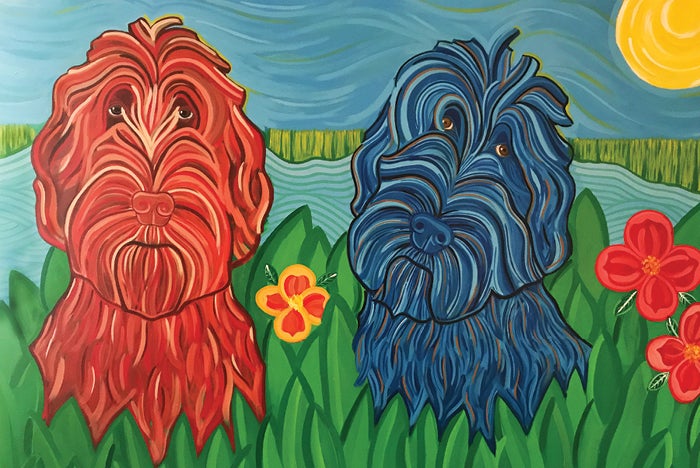Art curation serves healing purpose

Labradoodle portrait brings whimsy to MUSC’s emergency department.
Image courtesy of Louise Hall
Visitors walking through Medical University of South Carolina’s (MUSC) Shawn Jenkins Children’s Hospital are invited into an art gallery excursion. The Charleston, S.C.-based children’s hospital, which opened in February, features more than 300 art pieces from more than 30 mostly local artists.
Britt Bates, Arts in Healing collections coordinator at MUSC, helped to lead the curation of works adorning the walls of every area in the facility. Each piece was placed based on its complementary characteristics to various spaces.
For instance, the emergency department (ED) features self-portraits of children envisioning themselves as superheroes with messages of encouragement. The chapel includes a wall-sized fused glass representation of South Carolina’s famous and centuries-old Angel Oak tree.
Bates worked with a multidisciplinary team of designers, curators, patients, volunteers and clinical care leaders to select pieces created by artists who have a personal connection to the hospital.
Louise Hall, a visual artist, graphic designer and illustrator, certainly fit into that category. She created a whimsical dog portrait hanging in the new ED, which Hall says brings up memories from when her son was treated at MUSC 16 years ago after a pool accident. Her son was resuscitated at a local hospital and medevaced to MUSC where he stayed in pediatric intensive care for several weeks.
“I truly believe that MUSC Children’s Hospital absolutely saved [my son’s] life,” Hall says. “My hope is that my painting will bring at least a tiny shred of brightness to families.”
Bates says that brightening the days of patients and families is the very goal of MUSC’s art curation, from the “discovery prints” that allow children to find new elements in a piece every time they gaze at it, or the calming lithographs gracing the walls of labor and delivery.
“Our goal is always to have artwork that serves a healing purpose and improves the health and well-being of patients and caregivers as well,” Bates explains. “A lot of the work is very detailed because we want them to get lost in the work. We want people to find a connection to the work and not just walk by it.”

